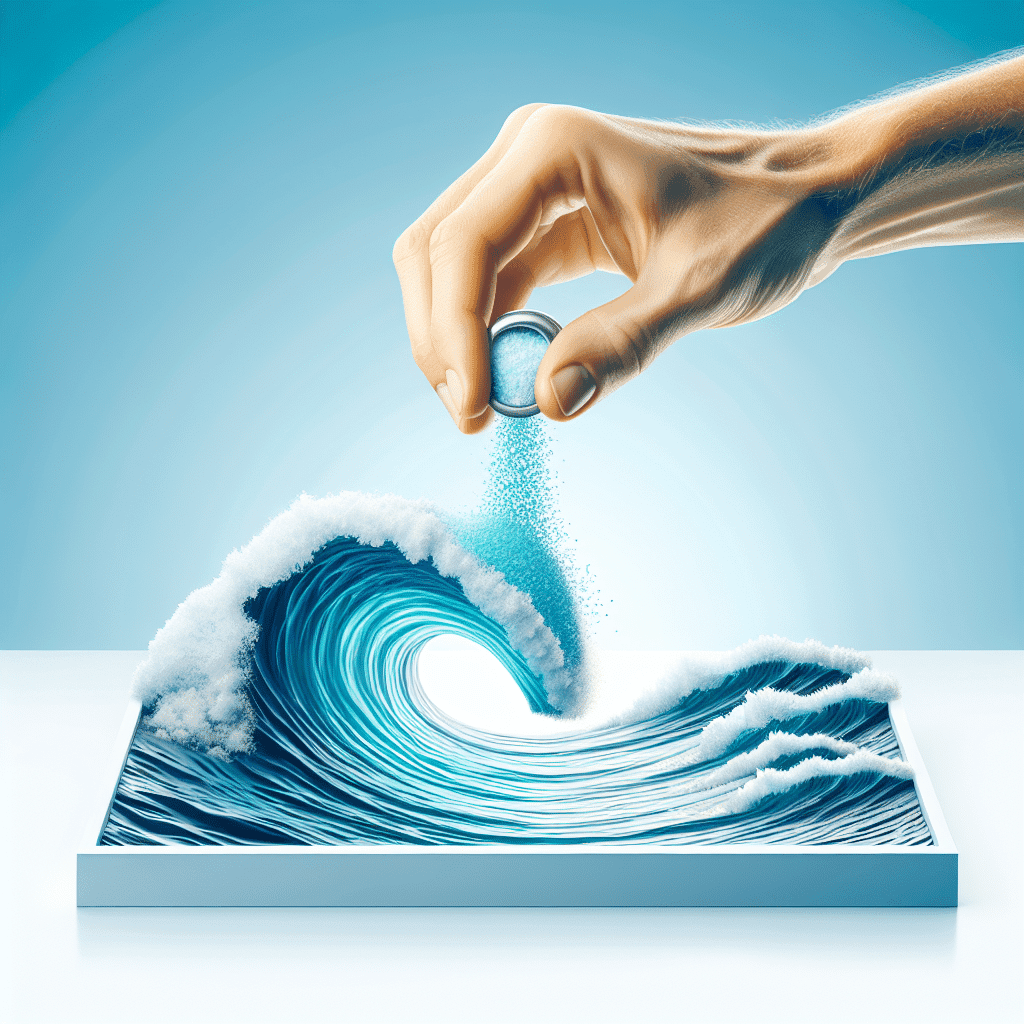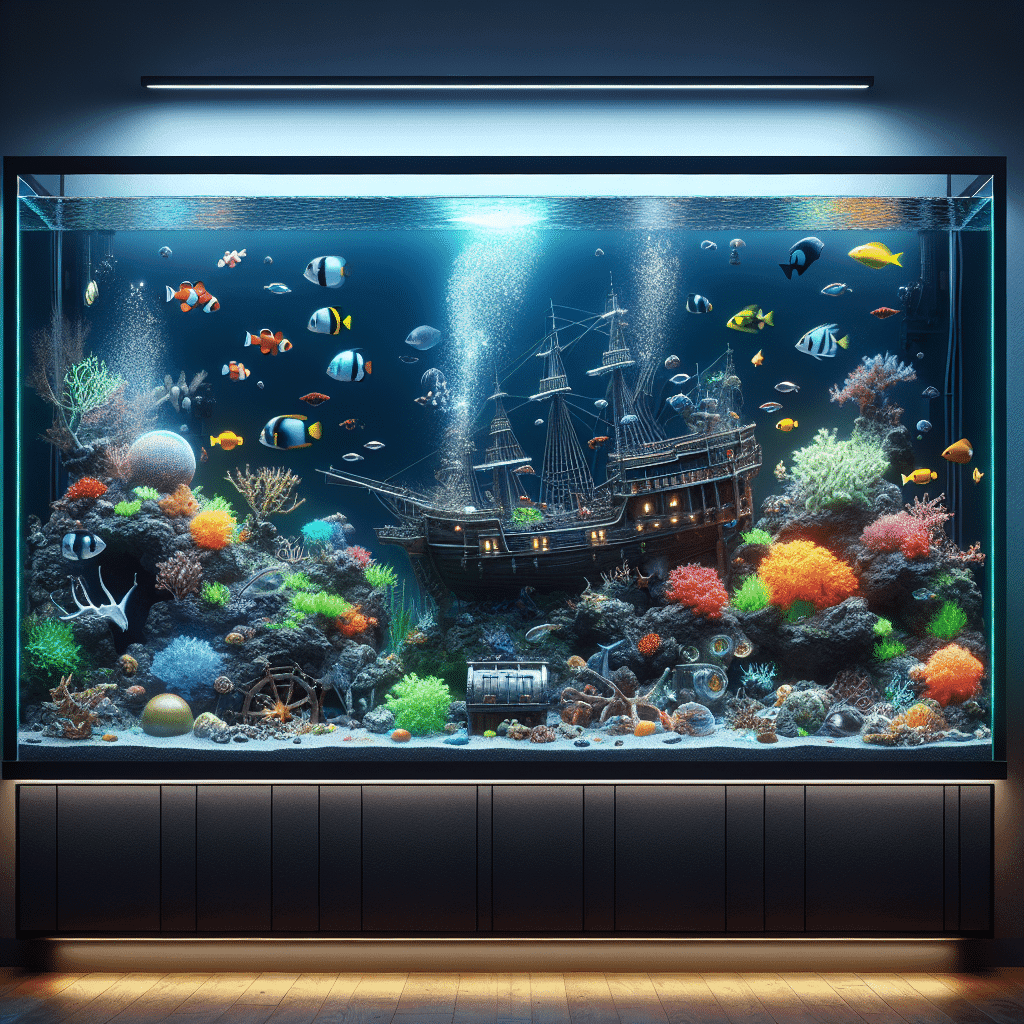Understanding Salinity
As I explore the fascinating world of saltwater aquariums, understanding salinity becomes a crucial part of my journey. It’s not just about adding salt; it’s about creating a balanced ecosystem where my fish and corals can thrive.
The Impact of Salinity Changes
Salinity significantly influences the types of organisms that inhabit a body of water. Changes in salinity can be a master factor affecting marine and estuarine species distribution. For instance, estuarine species are often euryhaline, meaning they can tolerate fluctuating salinity levels. In contrast, many marine species are stenohaline, limited by their narrow physiological tolerance range. This means that if I adjust salinity too drastically, I could stress or even harm my fish.
| Salinity Type | Organism Type | Tolerance Level |
|---|---|---|
| Euryhaline | Estuarine Species | Can adapt to varying salinity |
| Stenohaline | Marine Species | Sensitive to salinity changes |
When I observe changes in salinity, I notice how they can impact behavior, reproduction, and survival rates among my aquatic life. For example, lowered salinities might benefit estuarine organisms by reducing competition, whereas non-tolerant species may suffer stress. Understanding these dynamics is essential for maintaining a healthy aquarium.
Salinity and Ecosystems
Salinity is an ecological factor of considerable importance and influences not only fish but also the types of plants that can grow in or near aquatic environments (Wikipedia). Certain plants, known as halophytes, thrive in saline conditions, showcasing the intricate relationships between salinity and ecosystem health.
The effects of changing salinity extend beyond individual organisms, modifying the entire structure and function of aquatic ecosystems. As I adjust salinity levels in my aquarium, I must consider how these changes will affect my entire system. For example, fluctuations can impact nutrient cycling and overall water quality, which are critical for fish health.
In summary, understanding salinity and its impacts allows me to create a thriving marine environment. By carefully managing salinity levels, I can ensure my aquarium remains a vibrant ecosystem. For more insights on maintaining water quality, check out our guides on water changes and water safety.
Measuring Salinity
When I first started my journey into the world of saltwater aquariums, understanding how to measure salinity became one of the most exciting parts! Getting the salinity just right is crucial for the health of my marine life. There are a couple of methods I’ve discovered that make measuring salinity a breeze, plus different units to express those measurements.
Methods of Salinity Measurement
The most common tool I use is a salinometer. This device calculates the amount of salt present in a specific volume of water. It’s fascinating how it works! Some salinometers are digital, providing instant readings, while others are more traditional. Both methods can provide accurate results, helping me adjust salinity as needed.
Another method I’ve come across is using a refractometer. This tool measures how much light bends as it passes through the water, giving me a quick and reliable salinity reading. It’s especially handy when I’m out in the field or during water changes.
Here’s a quick comparison of the two methods:
| Method | Pros | Cons |
|---|---|---|
| Salinometer | Easy to use, quick results | May require calibration |
| Refractometer | Portable, precise | Needs regular cleaning |
Units of Salinity
Salinity levels are expressed in various units, and it’s good to know which ones are commonly used. The most prevalent unit I encounter is parts per million (ppm). It tells me how many grams of salt are present in a million grams of water.
Another unit is practical salinity units (psu), which is essentially the same as ppm but is often used in oceanography. Lastly, salinity can also be given as a percentage. For instance, ocean water averages about 35,000 ppm or 35 psu, meaning there are 35 grams of salt in every kilogram of seawater.
| Unit | Description | Example |
|---|---|---|
| Parts per million (ppm) | Grams of salt in a million grams of water | Ocean water: 35,000 ppm |
| Practical salinity units (psu) | Equivalent to ppm, often used in research | Ocean water: 35 psu |
| Percentage | Grams of salt per 100 grams of water | Ocean water: 3.5% |
Understanding these methods and units has transformed how I manage my saltwater aquarium. If you’re looking to dive deeper into the intricacies of maintaining your aquarium, check out my articles on saltwater aquarium setup and aquarium maintenance. Happy fish-keeping!
Effects of Salinity on Plants
Understanding how salinity affects plant growth is essential for anyone interested in maintaining a thriving ecosystem in their saltwater aquarium. High salinity levels can lead to various challenges for plants, impacting their health and productivity.
Plant Growth and Salinity
Salinity significantly inhibits plant growth by causing dehydration and nutrient deficiencies. Excessive salt in the soil can lead to a lack of nitrogen uptake and adversely affect phosphorus (P) absorption. This occurs because phosphate ions can precipitate with calcium (Ca) ions, making them unavailable for the plants (Britannica). The impact of salinity is far-reaching; it affects almost every aspect of plant development, including germination, vegetative growth, and reproductive success.
Here’s a quick breakdown of how salinity affects plants:
| Effect of Salinity | Description |
|---|---|
| Dehydration | High salinity levels cause plants to lose water, leading to wilting. |
| Nutrient Deficiency | Increased salinity limits nitrogen and phosphorus uptake. |
| Ion Toxicity | Excess sodium can accumulate, leading to osmotic stress and cell death. |
| Reduced Photosynthesis | Salinity can decrease leaf area, chlorophyll content, and stomatal conductance. |
Mitigating Salinity Effects
To combat the adverse effects of salinity on plants, it is crucial to consider using salt-tolerant crops. These crops are designed to withstand higher salinity levels, making them suitable for use in areas where salinization is a problem. Salt tolerance allows for the effective use of poor-quality irrigation water, which can be a game-changer for maintaining a healthy ecosystem in my aquarium.
In addition to choosing the right plants, I also recommend regularly monitoring salinity levels in the aquarium and adjusting them as necessary. This can help prevent the buildup of salinity that can harm sensitive aquatic plants. Techniques such as using a saltwater mixing measuring tool can help ensure that I maintain optimal conditions for my reef tank.
Maintaining a balance in salinity not only supports the health of plants but also enriches the overall ecosystem, promoting a vibrant and flourishing marine environment. For additional information on maintaining your aquarium, check out our articles on aquarium maintenance and water changes.
Salinity in Aquatic Ecosystems
Salinity plays a vital role in the health and functionality of aquatic ecosystems. I find it fascinating how different organisms adapt to varying salinity levels, which can significantly influence their survival and distribution.
Adaptations to Salinity
Aquatic species have evolved specific adaptations to survive in their unique salinity ranges. For instance, organisms known as Euryhaline can thrive in both fresh and saltwater environments, exhibiting remarkable osmoregulation abilities. This means they can manage the exchange of water and salts in their bodies, allowing them to move between low-saline and high-saline waters without succumbing to cellular damage (Quora).
Key adaptations include:
| Adaptation Type | Description |
|---|---|
| Excretion Mechanisms | High salt concentration adaptations help organisms excrete excess salt and retain water. |
| Osmoregulation | Ability to regulate internal salt concentration, vital for freshwater fish in seawater to avoid dehydration. |
| Cellular Resistance | Structures that prevent damage from osmotic pressure in fluctuating salinity environments. |
These adaptations are crucial for species residing in estuarine areas, tidal pools, and other environments where salinity changes frequently.
Impact on Marine Life
The impacts of salinity on marine life are profound and can dictate which species thrive in a particular area. For freshwater organisms, exposure to saltwater can result in severe dehydration, while saltwater species placed in freshwater can suffer from cellular damage due to overpressure (Quora).
Changing salinity levels act as a master factor in determining the distribution of marine and estuarine species. It influences not only individual species but also entire communities and ecosystems (Oxford Academic). For example, many reef-dwelling species have adapted to relatively stable salinity levels, which enhances their growth and reproductive success.
Understanding these adaptations and impacts is essential for any hobbyist like me who wants to maintain a healthy saltwater aquarium setup. As I adjust salinity levels, I must always consider the specific needs of my marine life to ensure they thrive in my aquarium environment.
Managing Salinity in Aquariums
As a passionate reef tank hobbyist, managing salinity levels is one of the most exciting aspects of maintaining a thriving marine environment. Salinity, the concentration of salt in water, is crucial for the health of my aquatic ecosystem. Here’s how I keep the salinity just right in my reef tank.
Salinity Control in Reef Tanks
To control salinity in my reef tank, I use a combination of techniques and tools. One of the primary instruments in my arsenal is a salinometer, which helps me measure the salt concentration accurately. This device calculates the amount of salt in a specific volume of water, providing readings in parts per million (ppm) or practical salinity units (psu). Regular monitoring is essential because even small fluctuations can impact the health of my saltwater fish and corals.
| Measurement Method | Units Used |
|---|---|
| Salinometer | ppm, psu |
| Refractometer | Specific Gravity |
| Hydrometer | Specific Gravity |
With these tools, I can ensure that the salinity remains within the optimal range for my marine inhabitants, typically between 1.020 and 1.026 specific gravity for reef tanks.
Adjusting Salinity Levels
When it comes to adjusting salinity levels, I have a few strategies that I find effective. If the salinity is too high, I can add fresh water to the tank gradually. Conversely, if the salinity is too low, I mix in a saltwater solution using the saltwater mixing measuring guide.
Here’s a simple process I follow:
- Test Salinity: Use a salinometer or refractometer to check the current levels.
- Prepare Saltwater: If needed, mix salt with dechlorinated water, ensuring it reaches the desired salinity before adding it to the tank.
- Add Water Gradually: To prevent shocking my fish and corals, I add the adjusted saltwater slowly over several hours.
- Monitor Levels: After adjustments, I continue to test the salinity to ensure it stabilizes within the ideal range.
Regular water changes are also part of my routine, as they help maintain consistent salinity levels while promoting overall water quality. For more tips on maintaining a healthy aquarium, check out my articles on aquarium maintenance and water changes.
By staying diligent with these practices, I can successfully manage salinity in my reef tank, helping my marine life flourish and creating a beautiful underwater environment!
Human Activities and Salinity
Anthropogenic Influence on Salinity
Human activities have a significant impact on salinity levels in aquatic environments. As an avid reef tank hobbyist, I find it fascinating how our actions can alter the delicate balance of marine ecosystems. Activities such as urban development, agriculture, and industrial processes can contribute to changes in salinity.
For instance, agricultural runoff often contains fertilizers and pesticides that can seep into nearby water bodies, increasing salinity levels. Additionally, urbanization can lead to increased evaporation rates in local water bodies, which concentrates salts and raises salinity. It’s essential to understand that these changes can influence the types of organisms that thrive in these environments. Certain plants, known as halophytes, are adapted to saline conditions and can survive where others cannot (Wikipedia).
Environmental Impacts
The environmental impacts of altered salinity levels are profound. Salinity influences not only the types of organisms that inhabit a water body but also the overall health of the ecosystem. For example, marine life is adapted to specific salinity ranges, and fluctuations can lead to stress or even death for sensitive species.
In my experiences, maintaining the correct salinity in my saltwater aquarium setup is crucial for the well-being of my fish and corals. Ocean water has an average salinity of about 35,000 ppm (35 psu), and it’s important to replicate these conditions in my tank. If salinity levels rise too high or drop too low, I risk harming my aquatic life.
Here’s a quick reference table to illustrate the average salinity levels in different environments:
| Environment | Average Salinity (ppm) |
|---|---|
| Freshwater | 0 – 1,000 |
| Brackish Water | 1,000 – 35,000 |
| Ocean Water | 35,000 |
| Inland Saline Lakes | 35,000 – 300,000 |
The salinity levels in our oceans play a significant role in shaping oceanic circulation patterns. This distribution contributes to the movement of nutrients and organisms, affecting marine biodiversity and ecosystem health.
As I continue to explore and maintain my reef tank, I remain mindful of these anthropogenic influences and their potential impacts on the delicate balance of marine life. For those interested in ensuring water quality in their aquariums, it’s essential to monitor salinity levels and make necessary adjustments, as discussed in my article on water changes.
Salinity and Soil Health
Understanding salinity is crucial for maintaining healthy soil, especially for those of us who are passionate about gardening or farming. High salinity levels can significantly impact plant growth and agricultural productivity, making it essential to manage salinity effectively.
Soil Salinization
Soil salinization happens when soluble salts accumulate in the soil, either through natural processes or due to human activities, particularly poor farming practices (EOS). This can lead to a range of problems for crops and the overall health of the soil.
| Salinity Class | Electrical Conductivity (dS/m) | Effect on Crop Yield |
|---|---|---|
| Non-saline | 0 – 2 | No effect |
| Slightly saline | 2 – 4 | Restricted yields |
| Moderately saline | 4 – 8 | Reduced yields |
| Strongly saline | 8 – 16 | Only tolerant crops yield satisfactorily |
| Very strongly saline | > 16 | Significant yield reduction |
The increasing rate of salinization is alarming, with estimates suggesting that 20% of cultivated and 33% of irrigated agricultural lands are affected by high salinity. This issue is expected to worsen, with projections indicating that more than 50% of arable land could be salinized by 2050 (NCBI).
Effects on Agricultural Productivity
Excess salts in the soil can result in various issues, such as poor and uneven crop stands, stunted growth, and decreased yields. The main problem with high salinity is that it reduces water availability for plants due to increased osmotic pressure in the soil solution. Moreover, the accumulation of certain ions can be toxic to plants or interfere with their ability to absorb essential nutrients (FAO).
Leaching is an effective method to lower salinity levels by removing salts from the root zone. This technique involves ponding fresh water on the soil surface and allowing it to infiltrate, effectively washing away excess salts. The required amount of water for this process depends on factors like initial salt content, desired salinity level, and soil characteristics (FAO).
Managing salinity is vital not just for maintaining healthy soil but also for ensuring that our crops thrive. As a dedicated aquarium hobbyist, I find it fascinating how the principles of salinity management in terrestrial ecosystems can also apply to maintaining the ideal environment for my saltwater aquarium. For more insights into creating a thriving environment in your aquarium, check out our guide on saltwater aquarium setup.
Salinity and Water Quality
Understanding the relationship between salinity and water quality is crucial for maintaining a healthy reef tank. As a hobbyist, I find that monitoring salinity levels can greatly impact both the aquatic environment and the overall success of my marine aquarium.
Salinity in Water Sources
The salinity of water sources plays a significant role in the quality of water in my aquarium. Ocean water is highly saline, with salt concentrations averaging about 35,000 ppm (35 psu) (Britannica). This natural salinity is essential for the health of marine life, including fish, corals, and invertebrates.
However, when it comes to freshwater sources, higher salinity levels can lead to serious issues. Increased salinity in freshwater can elevate drinking-water treatment costs, damage water-distribution piping, and shorten the lifespan of equipment. Additionally, saltwater intrusion into drinking-water supplies can contribute to water scarcity (Britannica).
| Water Source Type | Average Salinity (ppm) | Impact on Quality |
|---|---|---|
| Ocean Water | 35,000 | Supports marine life |
| Freshwater (high salinity) | Variable | Increases treatment costs and infrastructure damage |
Water Treatment Considerations
When managing salinity levels in my aquarium, I must also consider the methods of water treatment. Maintaining appropriate salinity is vital for the health of the marine ecosystem. High salinity levels can disrupt the delicate balance of nutrients and ions essential for marine life.
Regular water changes are crucial in maintaining optimal salinity levels, especially when using fresh or saltwater for topping off. I also utilize saltwater mixing measuring techniques and equipment to ensure that I have the right salinity before adding new water to my tank.
Moreover, I pay attention to potential pollutants in the water, as they can exacerbate salinity issues. For instance, high levels of salts from fertilizers can lead to increased salinity in nearby freshwater sources, affecting the overall water quality in my aquarium. Ensuring that my water is safe for marine life involves monitoring and managing other parameters like pH and alkalinity as well (water safety).
By understanding the dynamics of salinity in water sources and its implications for water treatment, I can effectively adjust salinity levels and maintain a healthy environment for my reef tank. Keeping a close eye on these factors makes a big difference in the success of my saltwater aquarium!



